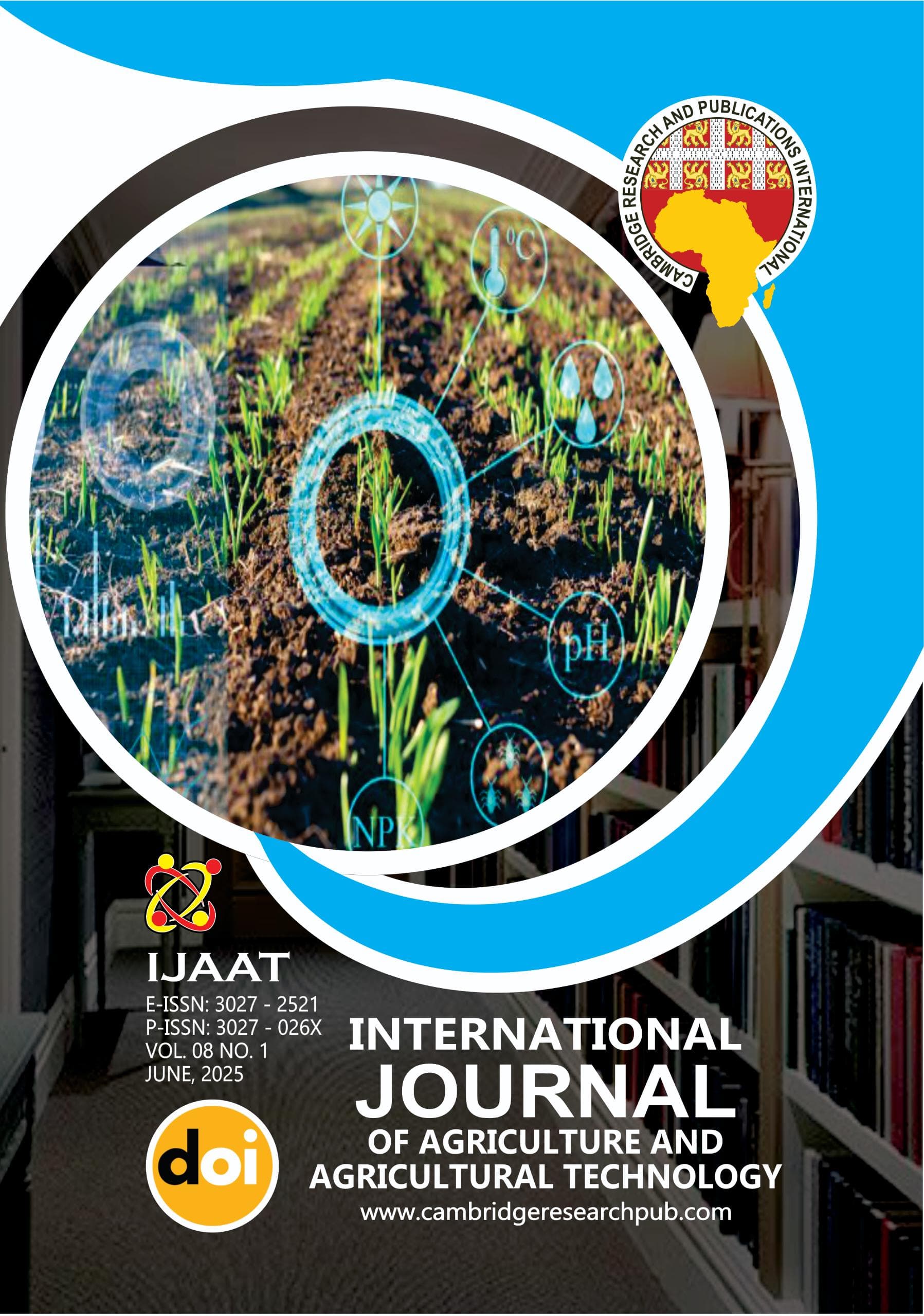INNOVATION CAPABILITY IN AGRIBUSINESS CLUSTERS: IMPLICATIONS FOR SOCIOECONOMIC DEVELOPMENT IN NORTH CENTRAL NIGERIA
Main Article Content
Abstract
This study examines the role of innovation capacity in agribusiness clusters as a catalyst for socioeconomic growth in North Central Nigeria, focusing on its impact on education development and employment generation, with government policies as a moderating factor. A quantitative research design was employed, utilizing a multi-stage sampling method to survey 423 registered farmers under the Nigeria Incentive-Based Risk Sharing System for Agricultural Lending (NIRSAL) Agro-Geo Cluster Scheme in Niger, Nasarawa, and the Federal Capital Territory. Data were analysed using Partial Least Squares-Structural Equation Modeling (PLS-SEM) to assess the relationships between innovation, socioeconomic growth, and policy influence. The results reveal a significant positive relationship between innovation capacity and both education (t = 16.164, p < 0.000) and employment generation (t = 15.228, p < 0.000). Government policies do not strengthen these relationships, demonstrating a weak moderating effect (β = 0.036 for education; negative β = (0.061) for employment). The study highlights how collaborative creative exchange within clusters enhances skills, innovation, and job creation. Policymakers should prioritize cluster-based initiatives that foster innovative activities, such as workshop programs and partnerships with educational institutions. Agribusinesses are encouraged to adopt cooperative learning models to drive socioeconomic development. This study contributes to the literature by empirically validating the nexus between innovation capacity, government policies, and socioeconomic outcomes in agribusiness clusters, offering a framework for sustainable regional development in emerging economies. It extends cluster theory by integrating policy moderation, providing actionable insights for stakeholders in Nigeria and similar contexts.
Downloads
Article Details
Issue
Section

This work is licensed under a Creative Commons Attribution 4.0 International License.




